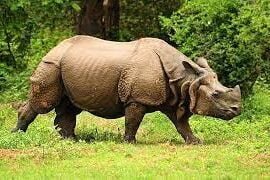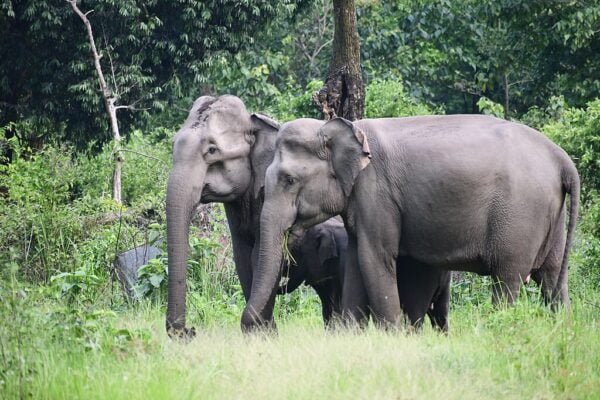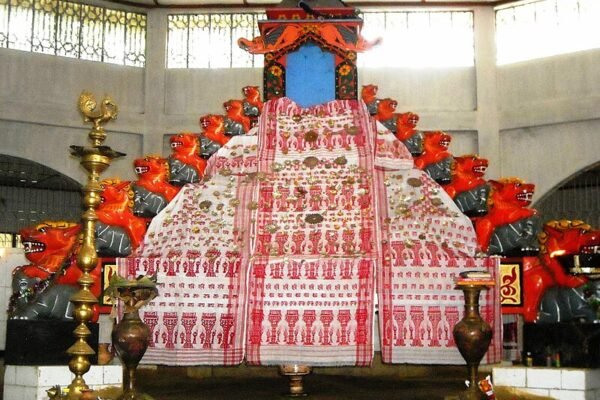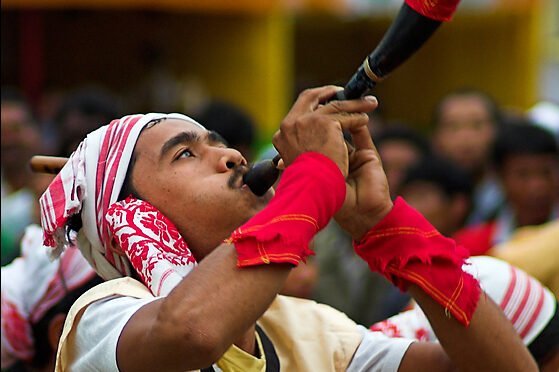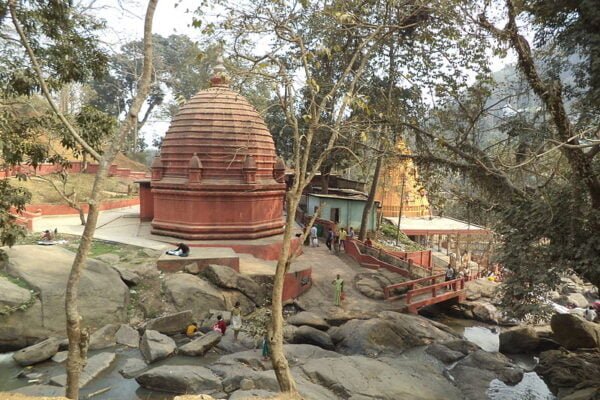No products in the cart.
Assam: A Glorious History
THE LAND ADORNED WITH THE SAGA OF IMMORTAL DEEDS
Nestled in the serene embrace of Northeast Bharat, Assam stands as a testament to nature’s splendor and cultural richness. Known for its verdant landscapes, diverse wildlife, and vibrant heritage, Assam beckons travelers with its unparalleled charm.
Assam has an extensive history going back to the ancient times. Through archaeology and later through the modern DNA analysis, it has now been established beyond doubt that the region was inhabited by Austro-Asiatic, Tibeto-Burman and Indo-European tribes from an early age. However, the earliest presence of any inhabitants here is thought to be from the Middle Pleistocene epoch of the geological time- scale of the planet, which starts from around 760,000 years ago. They are assumed to have
roamed the Garo Hills, Rongram Valley, not very far from modern Guwahati.
As we have already seen. Assam was known as Kamrup earlier, and its capital was at Pragjyotishpura, which is roughly modern- day Guwahati. The region of Kamrup has been extensively mentioned in some of the inscriptions of the famous Gupta Empire (the Allahabad inscription of Samudragupta). Historically, it has been ruled by several important dynasties. One of the earliest ones was the Varman Dynasty. Their most famous and illustrious ruler was Kumar Bhaskaravarman.
The Great king Kumar, Bhaskaravarman, one of the most glorious kings of Assam was visited by the famous Chinese pilgrim Xuanzang
who was a friend and ally of Harshavardhana and has been profusely glorified in the accounts of the Chinese pilgrim Xuanzang. The other important dynasties were the Pala, Koch, Chutiya and eventually the Ahom, who later consolidated and gave its identification to the region and its people. Assam has indeed seen many upheavals in its history and this land is adorned with the narratives of its brave warriors who have graced its beautiful valleys with the saga of their immortal deeds-either the first Ahom king Sukhaphaa or great generals like Lachit Borphukan who had given the mighty Mughals the most resounding defeat in the now-famous Battle of Saraighat or the legendary warrior Prince Chilarai.
The Historical Route
This land is strewn with corroborative pieces of relics from the past
The beautiful structure of Talatal Ghar near Sivasagar is one of the perfect examples of Ahom architecture. The visitors here can look around the upper floors. The underground floors have been sealed-off as visitors earlier used to get frequently lost in them.
Another grand example of Ahom architecture is the ‘Kareng Ghar’ (also known as the Garhgaon Palace) situated in the afore-mentioned area.
Rang Ghar’, also in Sivasagar, is considered by many as one of Asia’s first amphitheatres and is another monument of sheer grandeur.
The ruins of the Khaspur Fort near Silchar in the Barak Valley also hold great historical value.
Where the Wild Things are
THE CLEAREST WAY INTO THE UNIVERSE IS THROUGH A FOREST WILDERNESS Assam is one of the greenest zones of India and hence, is very rich in biodiversity. The entire world is conscious of the fact that the region is famed for its great one-horned rhinoceros, an endangered species, which has been successfully conserved in the wilds of Assam, but not many are aware that the state has also been one of the most effective places in India for tiger conservation.
Not only that, Assam is also home to some of the most endangered species in the world like the pygmy hog, golden langur, pink-headed duck etc. Assam has a large population of wild water buffaloes too, probably the highest in the world.
It is also the state with the highest diversity of birds in the entire country.
Dibru-Saikhowa National Park
A place with a synthesis of grasslands, swamp forests, canebrakes, deciduous forests and moist mixed semi-evergreen forests. this is an ideal national park for a hiking. This park is located in the Dibrugarh and Tinsukia districts in the eastern most part of Assam and is bounded by the Brahmaputra, Lohit and Dibru rivers. The core area of this park is around 340 sq kilometers and because of its diverse structure, the park hosts multiple species of animals, birds and reptiles like the Royal Bengal tiger, Indian leopard, Asiatic water buffalo, Hoolock gibbon and Asian elephant, among others.
This park is unique for being the only place in the world that is inhabited by ‘feral horses’. During World War II, Northeast India was a major theatre of activities. These horses in Dibru- Saikhowa are the descendants of those camp horses left behind by the Allied Army soldiers.
Dehing Patkai Wildlife Sanctuary
Dehing Patkai is the only rainforest in Assam. This sanctuary is also situated in the districts of Tinsukia and Dibrugarh and has a very rich cultural heritage as well. It is also a part of the Dehing Patkai Elephant Reserve and the rainforest here forms the largest stretch of tropical lowland rainforests in this country. It spreads over to the state of Arunachal Pradesh and hence part of its name has also been derived from the Patkai mountain range, which extends deep into the state. This sanctuary has a very wide variety of birds, reptiles, mammals and butterflies.
Hoollongapar Gibbon Sanctuary
Deriving its name from the ubiquitous Dipterocarpus macrocarpus tree (commonly known as Hollong), the Hoollongapar Gibbon Sanctuary is home to the only ape found in this country, the Hoolock gibbons. This sanctuary is the home to six non- human primate species in addition to the Hoolock gibbon. It also hosts Northeast India’s only nocturnal primate, the Bengal slow loris. There is a very interesting local legend associated with this place. It is said that once a boy and a girl from a local tribe here consummated their relationship without getting married. This enraged their God who turned them into these gibbons. They then prayed to the God making the same sound which a Hoolock gibbon now makes, asking for forgiveness. This sanctuary is situated in the Jorhat district of Assam.
Pobitora Wildlife Sanctuary
Located close to Guwahati and closer to the black-magic village of Mayong, Pobitora has the highest density of one-horned rhinos in the world. Other than the rhinoceros, this sanctuary has a wide variety of birds, barking deer, rhesus macaque, Indian leopard etc.
| We will now talk about another important place of Assam. This place has some very interesting etymological origins, one of which seems to be historically correct as archaeological evidence of some scattered monoliths related to the people have been found here. It is said that a girl from the indigenous Karbi tribe by the name of Kajir once used to rule over this place. Hence, subsequently the place came to be known as ‘Kajir-a- rang’ (Village of Kajir), which corrupted to become Kaziranga, the gem of Assam and a UNESCO World Heritage site now. Kaziranga National Park has two-thirds of the world’s population of one-horned rhinoceros and it also has the highest density of Royal Bengal tigers in the world. Kaziranga, having increased its rhino population from just about twenty in 1905 to 2000-plus by 2005, is said to be the world’s greatest conservation story of the last century. Some other important forests of Assam are Manas National Park-a UNESCO World Heritage Site, Nameri National Park in Sonitpur district, Orang National Park in Darang and Sonitpur districts and Borail Wildlife Sanctuary in South Assam, among others. |
THE LAND of God
“LET YOUR RELIGION BE LESS OF A THEORY AND MORE OF A LOVE AFFAIR”
Assam is a holy land which has been traversed by multitudes of noble souls for eternity, bringing salvation and foresights to the inhabitants here. The land is so beautiful that time and again, there have been myths created about Gods and demi-Gods who have found sanctuary here, living in peace for eternity. Srimanta Sankardeva, the great medieval Assamese saint-reformer started the Bhakti Movement in Assam. The ‘Satra’ institutions that he had established are today the epicenters of Assamese Satriya art, culture, music, dance, theatre and literature. Ajan Pir or Ajan Fakir, born as Shah Miran in Baghdad, on the other hand was a Sufi saint, poet and preacher who arrived in Assam in the 17th century and settled down here to create the beautiful jikir and jari songs in Assamese.
The Kamakhya Temple
also known as Kamrup-Kamakhya, is a Hindu temple dedicated to the goddess Kamakhya. It is located on Nilachal Hill in Guwahati, Assam, India. The temple is one of the 51 Shakti Peethas, which are revered as the holiest shrines in Shaktism, a major tradition of Hinduism that focuses on the worship of the goddess as the Supreme Being.
The main deity of the Kamakhya Temple is Kamakhya Devi, who is believed to be an embodiment of Shakti, the feminine cosmic energy. The temple complex consists of several smaller temples dedicated to different forms of the goddess, as well as shrines for other Hindu deities.
One of the most unique aspects of the Kamakhya Temple is its association with fertility rituals and the celebration of the annual Ambubachi Mela, which attracts thousands of devotees from across India. During the Ambubachi Mela, it is believed that the goddess Kamakhya undergoes her menstrual cycle, and the temple remains closed for three days. After this period, the temple reopens, and devotees gather to receive blessings and prasad (holy offerings).
The Kamakhya Temple is not only a significant religious site but also an architectural marvel, featuring a blend of Hindu and indigenous Assamese architectural styles. The temple’s location on Nilachal Hill offers panoramic views of the Brahmaputra River and the city of Guwahati.
Visitors to the Kamakhya Temple can experience the rich cultural heritage of Assam and witness various rituals and ceremonies performed by the temple priests. The temple attracts pilgrims, tourists, and spiritual seekers throughout the year, making it one of the most prominent landmarks in the region.
Hajo
Where on earth would you come across a place where three major religions of this world (Hinduism, Buddhism and Islam) are worshipped and celebrated equally? The ancient pilgrimage centre of Hajo near Guwahati is one such place. The Hayagriva- Madhava Temple here is sacred to both the Hindus and the Buddhists, one worshipping the Narasingha Avatar of Lord Vishnu and the other believing it to be the place where Gautama Buddha attained nirvana. It is also famous for Poa Mecca, the visit of which ensures one-fourth salvation of a Haj Pilgrimage.
Navagrahın Temple of Guwahati
In ancient times, Guwahati was called Pragjyotishpura and the reason is the belief that this temple was the place where Lord Brahma created the stars and the nine planets, which gradually gave birth to the practice of astrology. Jyotish, in local language, is the word for astrology.
Mahabhairav Temple of Tezpur
This ancient temple is believed to have been constructed by the mythical Banasura. The temple is dedicated to Lord Shiva and the local people here believe that the large Shivalinga in this temple grows in size every year.
Bordowa Thaan of Nagoan
The picturesque village of Bordowa together with this monastery is known all over the world as the birthplace of Srimanta Sankaradeva,
the great saint, scholar, preacher, reformer and the father of Bhakti Movement in Assam. This place is visited by Vaishnavites and non Vaishnavites and also from people of other faiths.
Some of the other famous shrines of Assam are the reverred Kamakhya Temple – one of the Shakti Peeths of Hinduism; Ugratara Temple – the place where Sati’s naval is believed to have fallen; Kachakanti Temple established by the Kachari kings in Cachar District-a deity who is an amalgamation of both Goddess Durga and Kali; Gurudwara Sri Guru Tegh Bahadur Sahib in Dhubri; Vasishtha Ashram in Guwahati; and Azan Fakir’s Dargah in Sivasagar.
Madan Kamdev
Madan Kamdev is an archaeological site which has been described as the Khajuraho of the East. These temples, the ruins of which we see now, are believed to have been constructed around 9th to 10th centuries CE. The place is around 40 kilometers from Guwahati.
Another important archaeological religious site in Assam is the Deopahar – the Hill of the God- in Numaligarh.
Photo Credit : Assam Tourism & Wiki Commons










